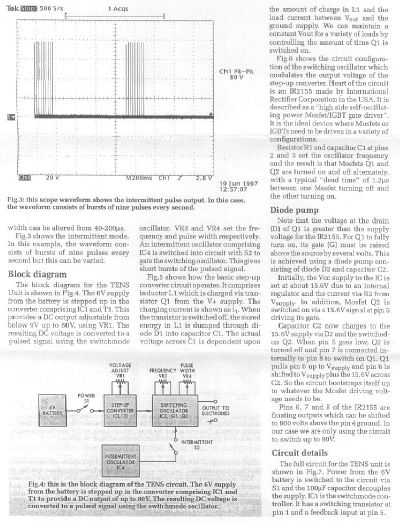My first patches (tutoriel):
PROJECT : Electrotherapy to ease pain
- Electrotherapy made simple : https://www.youtube.com/watch?v=JAPU5iEfFVY
My first patches for our project : Only Ideas (because false)
- Max : File:Idee 1 Max - electrotherapy control with pain.maxpat
- Arduino :
Exemple Arduino with Sensor :
- https://www.arduino.cc/en/Tutorial/Memsic2125
- https://fr.flossmanuals.net/arduino/comment-bien-structurer-son-code/
Schema for Arduino :
Why Electricity?
When you feel nerve pain, an electrical signal is sent from a damaged nerve to your brain. Electrical stimulation for nerve pain works by sending out its own electrical impulses. These charges seem to interrupt or block the pain signals, reducing the pain you feel.
Types of Electrotherapy
All electrotherapy devices have certain similarities, such as using battery power to apply current to electrodes. The therapies vary in frequencies, waveforms, and effects, however. These are some of the most commonly used kinds of electrotherapy:
Transcutaneous electrical nerve stimulation (TENS) Percutaneous electrical nerve stimulation (PENS) Electrical muscle stimulation (EMS) Interferential current (IFC) Pulsed electromagnetic field therapy (PEMF) Galvanic stimulation (GS)
- Intensity: A dial allows the user to adjust the intensity of the electrical stimulation.
- Frequency: The frequency refers to the number of electrical pulses per second. High-frequency (HF) pulses range from 80 to 120 cycles per second and may help manage acute pain. Low-frequency (LF) pulses range from 1 to 20 cycles per second and are suitable for the treatment of chronic pain.
- Duration: The duration is the number of microseconds that the current enters the skin for during each pulse.
BENEFITS
TENS is a noninvasive method for relieving pain. People who experience pain relief from TENS may be able to reduce their intake of pain medications, some of which can be addictive or cause adverse side effects.
TENS units are also convenient because they are small, portable, and relatively discrete. People can carry a TENS unit in their pocket or clip it onto a belt to ensure that they have immediate access to pain relief throughout the day.
BUT : Electrotherapy Side Effects
- irritation or rash, caused by the adhesives in the electrodes or the tape holding the electrodes in place. Overusing electrotherapy may cause a burning feeling in the skin. =) duration of therapy should be followed closely to avoid a problem.
- buzzing, tingling or prickling sensation, which some people may find uncomfortable
- allergy to the adhesive pads
- Placing the pads over the heart or over pacemaker leads could cause cardiac arrhythmia and placing them over a pregnant woman's abdomen could cause fetal damage.
It is vital never to place the electrodes on either the front of the neck or the eyes. Putting electrodes on the neck can lower blood pressure and cause spasms. On the eyes, the electrodes can increase pressure within the eye and possibly cause an injury.
Electrical stimulation from a TENS machine can cause pain and twitching in the underlying muscles if you adjust the intensity too high. Lower the intensity until you feel just a strong tingling sensation, without muscle twitching. Prolonged use, even at lower intensity levels, may occasionally cause mild muscle soreness. For this reason, it is usually recommended that a TENS machine not be used for more than a few hours at a time.
Never place the pads over:
- the front or sides of your neck - your temples - your mouth or eyes - your chest and upper back at the same time - irritated, infected or broken skin - varicose veins - numb areas

